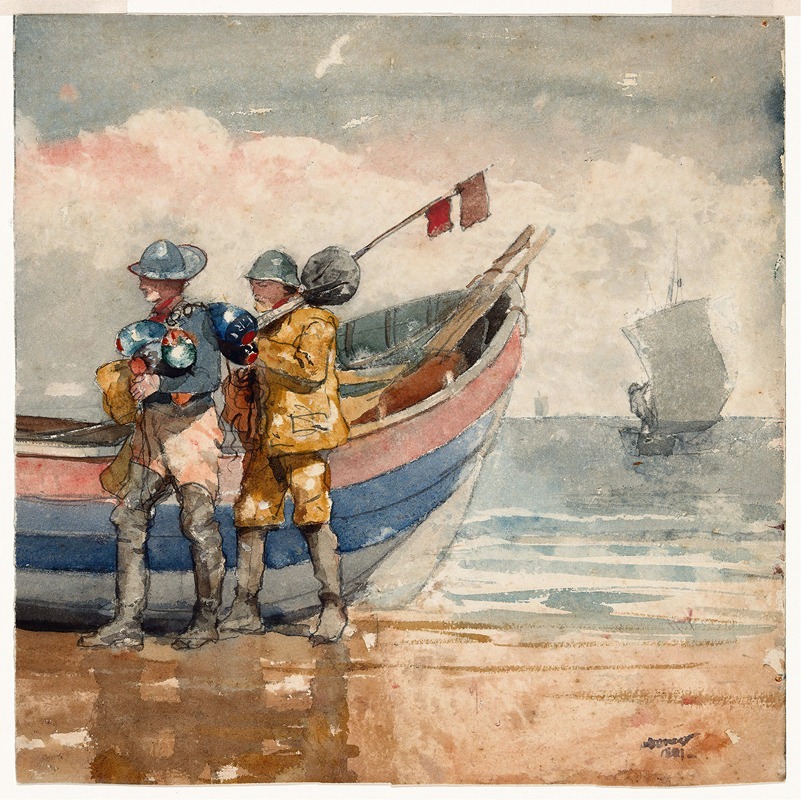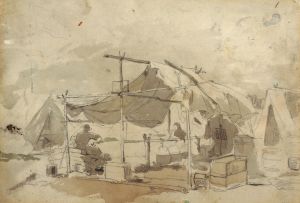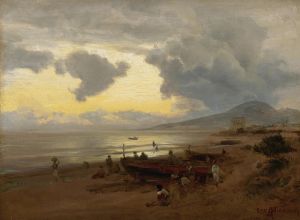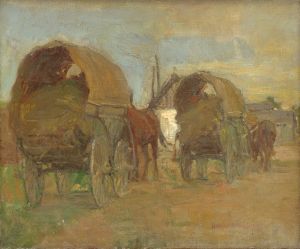
The Return, Tynemouth
A hand-painted replica of Winslow Homer’s masterpiece The Return, Tynemouth, meticulously crafted by professional artists to capture the true essence of the original. Each piece is created with museum-quality canvas and rare mineral pigments, carefully painted by experienced artists with delicate brushstrokes and rich, layered colors to perfectly recreate the texture of the original artwork. Unlike machine-printed reproductions, this hand-painted version brings the painting to life, infused with the artist’s emotions and skill in every stroke. Whether for personal collection or home decoration, it instantly elevates the artistic atmosphere of any space.
Winslow Homer, an American artist renowned for his marine subjects, painted "The Return, Tynemouth" during his stay in England from 1881 to 1882. This period was a significant phase in Homer's career, as he was deeply influenced by the English coastline and the lives of the people who lived there. "The Return, Tynemouth" is one of the works that captures the essence of this influence.
Homer traveled to the small coastal village of Cullercoats, near Tynemouth, on the northeast coast of England. This area was known for its fishing community, and the daily lives of the fishermen and their families became a central theme in Homer's work during this time. The harsh and often dangerous life at sea, along with the resilience and strength of the people, is vividly depicted in his paintings.
"The Return, Tynemouth" reflects Homer's keen observation of the sea and the people who depended on it. The painting likely portrays the return of fishermen from the sea, a common and significant event in the coastal communities. Homer was known for his ability to capture the mood and atmosphere of the scenes he painted, and this work is no exception. The use of color, light, and composition in "The Return, Tynemouth" conveys a sense of anticipation and relief as the fishermen return safely to shore.
During his time in England, Homer was influenced by the British watercolor tradition, which is evident in the fluidity and transparency of his works from this period. He mastered the use of watercolors, which allowed him to create detailed and expressive scenes with a sense of immediacy. This technique is likely reflected in "The Return, Tynemouth," showcasing his skill in capturing the nuances of light and movement.
Homer's experience in Tynemouth and Cullercoats had a lasting impact on his artistic style. The works he produced during this period marked a transition from his earlier, more narrative-driven pieces to a focus on mood, atmosphere, and the raw power of nature. This shift is evident in "The Return, Tynemouth," where the emphasis is on the emotional and physical experience of the subjects rather than a specific storyline.
"The Return, Tynemouth" is part of a broader body of work that highlights Homer's fascination with the sea and the people who lived by it. His time in England enriched his understanding of the relationship between humans and nature, a theme that continued to resonate in his later works upon returning to the United States.
Overall, "The Return, Tynemouth" exemplifies Winslow Homer's ability to convey the strength and resilience of coastal communities through his art. His time in Tynemouth was a pivotal moment in his career, influencing his approach to painting and solidifying his reputation as one of America's foremost artists of the 19th century.


















